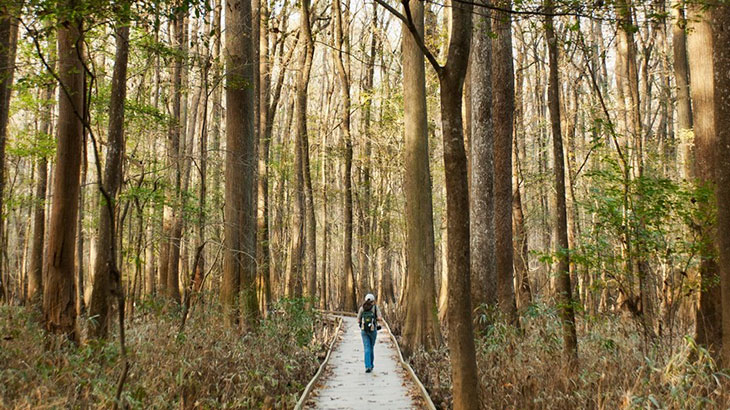
Congaree National Park is a 27,000 acre park located in Hopkins, South Carolina. The closest major city is Columbia, about 20 miles northwest of Congaree. The park’s southern border runs along the Congaree River, with several smaller lakes, creeks, and rivers running through the property.
Reasons to Visit
Congaree National Park offers something for everyone. For active explorers, you can take your pick between hiking, kayaking, canoeing, and tent camping, or the more primitive option—backcountry camping. Backcountry camping is a great option for those who really want to “rough it.” There are no designated backcountry campsites, which means you can camp anywhere you like, as long as its 100 feet away from the riverbanks.
There are 9 hiking trail options (ranging in length from .6 miles to the 24-mile roundtrip Kingsnake Trail,) as well as the Boardwalk Loop Trail (2.4 mile loop.) The Boardwalk Loop is exactly what it sounds like—an easy-going, flat Boardwalk that loops through the forest. This is a great stroller and wheelchair accessible option, giving everyone a chance to enjoy the forest and observe some of the park’s plants and animals.
If you’re feeling more introspective or nature-loving, Congaree National Park also has many options to learn about and appreciate nature. The park is very popular for picnicking, fishing, nature photography, and birdwatching. You can join a Park Ranger on an informative tour, such as the Nature Discovery Walk or the Big Tree Hike. The Forest Wellness Program, intended to help participants de-stress while spending time in nature, offers options like yoga and art classes…in the forest! (Note that many of the tours and classes happen on the weekend; see the park’s official website for details.)
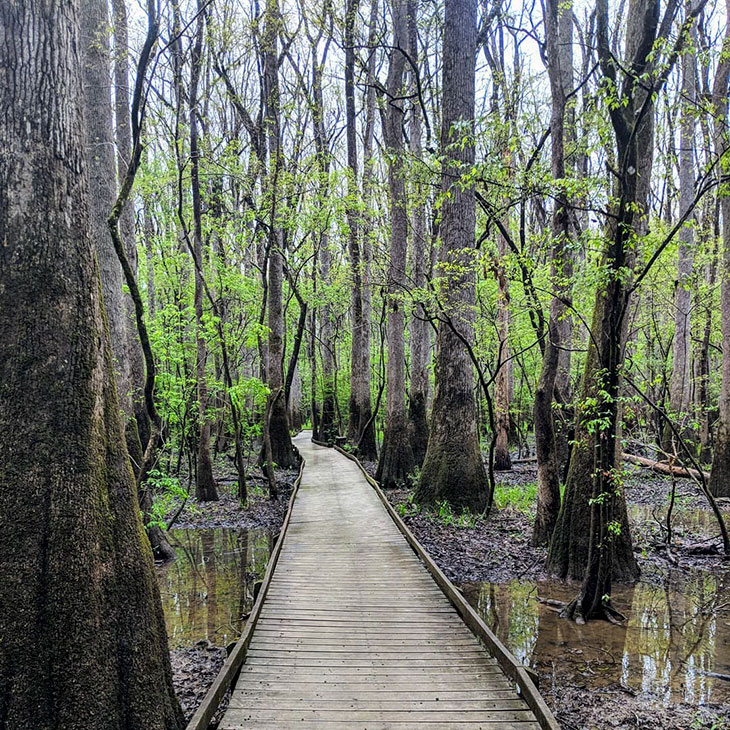
photo: hercheklist
Claims to Fame
Nature Conservation
The park’s most noteworthy claim to fame lies in its natural beauty. Many visitors may not realize the significance of this giant park and its giant trees, but it is recognized both internationally and nationally as a UNESCO-designated Biosphere Reserve, a federally designated Wilderness Area, and a Globally Important Bird Area. Harry Hampton, a forward-thinking conservationist and lifelong South Carolinian, led the charge to protect the area from commercial timbering in the 1950s. The legislation that officially established the park was passed on October 18, 1976. Thanks to Hampton’s efforts and this legislation, the forest found in the park today is the largest area of old-growth bottomland hardwood forest remaining in the United States. The park also contains some of the tallest trees in Eastern North America, including a loblolly tree that is the largest in the country. It is South Carolina’s only National Park.
Fireflies!
Everyone’s favorite bugs dazzle park visitors every spring as the fireflies synchronize their lights to attract the perfect mate. The park holds its Congaree Fireflies Festival to coincide with peak firefly activity. The festival allows visitors to observe this magical phenomenon in the insect’s natural habitat., with only a limited number of entrants permitted to avoid overcrowding. The best time of night to see the fireflies is just after dark, usually around 9-10 pm.
Best Time to Visit
The park and trails are open 24/7, so visitors may explore at their leisure, day or night.
Each season at Congaree has its advantages, but the best times to visit are Spring (March-May) or early Fall. Spring will give you mild temperatures and the mosquitoes are not out in full force, like later in the summer. Fall can be nice to observe the changing foliage, and a kayak or canoe ride through the creeks is lovely at this time. Generally speaking, Fall also offers lower temperatures and humidity.
If you want to see the fireflies in action, plan to come mid-May to mid-June. The 2020 Congaree Fireflies Festival dates are May 11-24. While peak firefly activity is always up to Mother Nature, the park uses historical and scientific data to try to overlap the festival with peak activity.
Plan your Visit
Here are a few things to keep in mind when you visit:
• Entrance to the park is free.
• Some GPS programs and devices give inaccurate directions here, so if you’re the one in charge of navigation, make sure to plug in their official address: 100 National Park Road, Hopkins, SC.
• The Harry Hampton Visitor’s Center is open 9 am-5 pm, 7 days a week throughout the year (closed federal holidays.) Be sure to stop by for an informative video, to chat with a Park Ranger, or pick up your self-guided tour of the Boardwalk Loop.
• Note for RV/Van Campers: According to the National Park Service’s website, this park does not permit overnight camping in vehicles, as the parking lots are not designated camping areas and they don’t have appropriate facilities for RV/Campers. There is ample parking for those who wish to reserve a campsite and walk to it, but if you wish to spend the night in your vehicle, Congaree’s website suggests the surrounding South Carolina State Parks. Details on these options can be found on the South Carolina State Parks website or Experience Columbia website.
• There are hundreds of plant and animals that make up the unique ecosystem at Congaree. Check out the National Park Service’s official Congaree Park website for a checklist of some of the species and varietals you can spot on your trip.
• While mosquitoes and other bugs are a natural part of the park’s ecosystem, these pests can understandably make visits less enjoyable. If you’re worried mosquitoes will put a damper on your trip, remember to pack bug spray and wear long sleeves and pants, if it’s not too hot. Another option is to come for a hike in the winter, when mosquito populations die off and temperatures are cooler.
Congaree National Park is definitely worth a stop on your next drive through the East Coast. Whether you’re looking for a strenuous hike to scout out your own backwoods campsite, or to enjoy a leisurely stroll down the Boardwalk and perhaps some yoga under the trees, Congaree has you covered…literally! You won’t regret visiting this picturesque, historic patch of American wilderness.
Related Article: What Is A National Parks Pass?

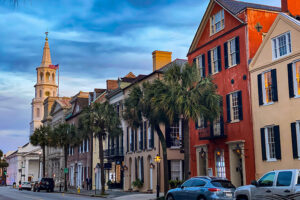
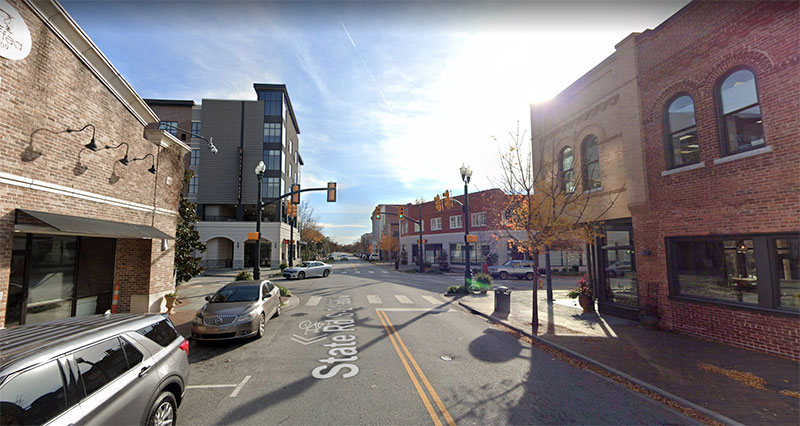
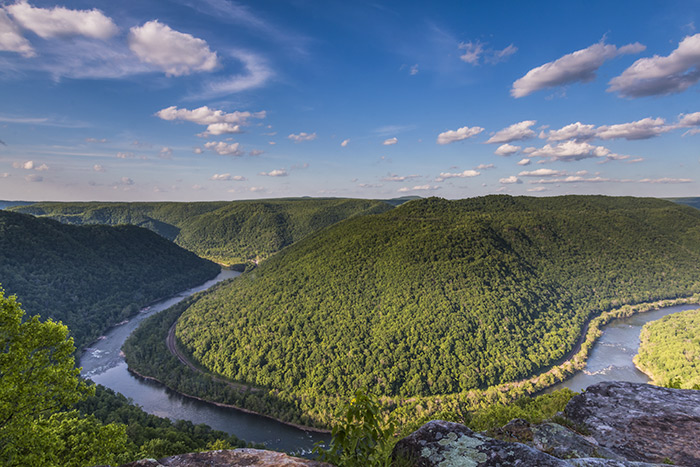
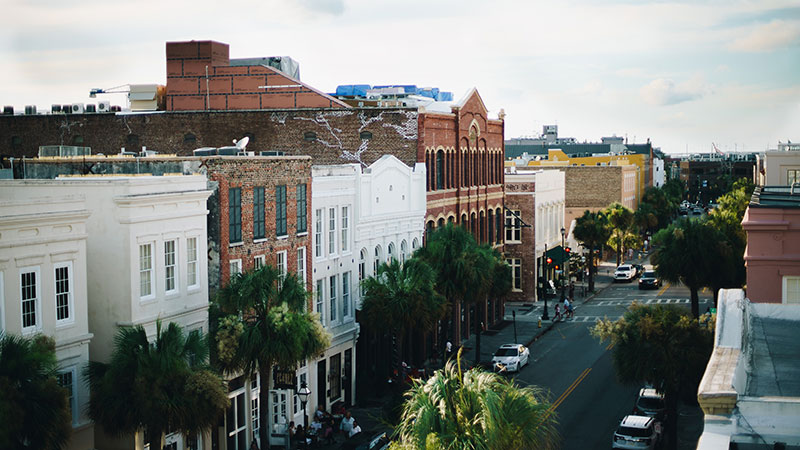
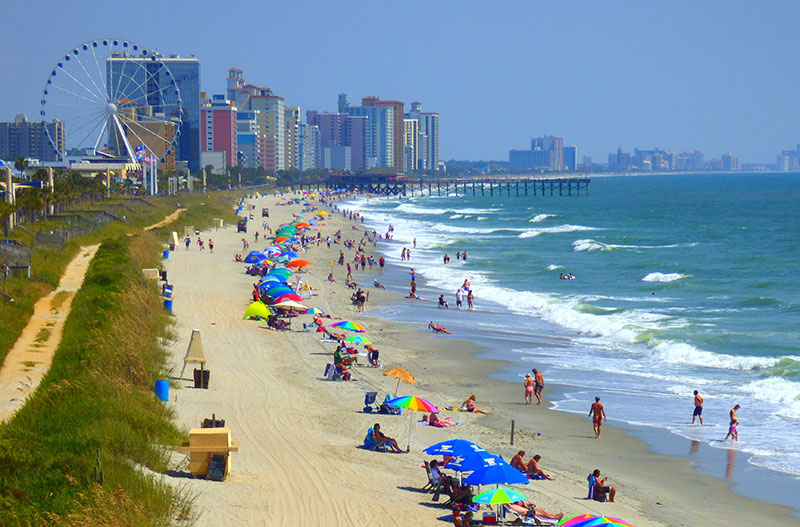
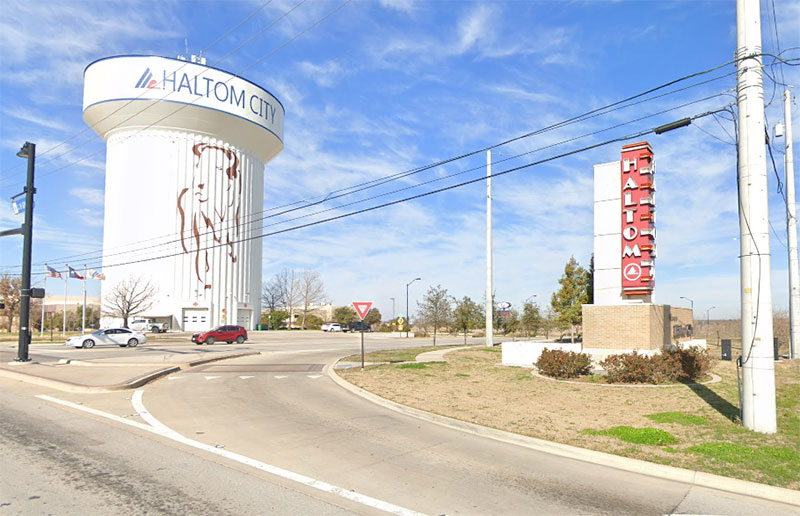
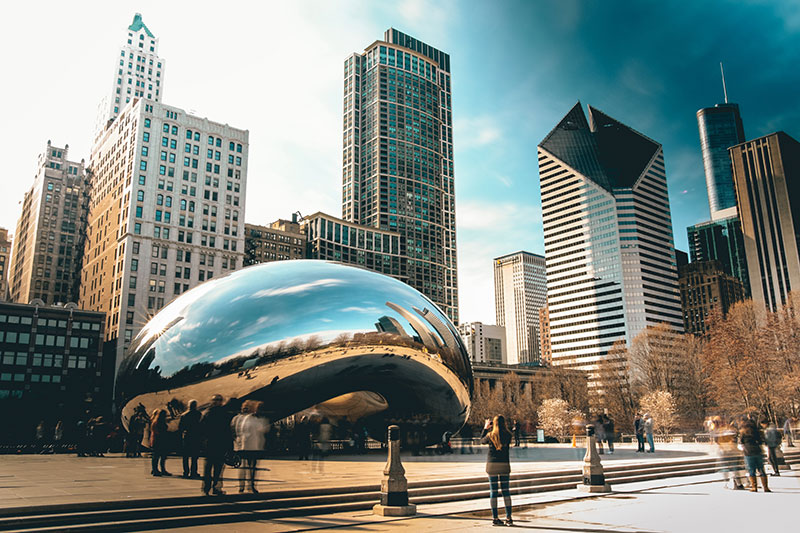
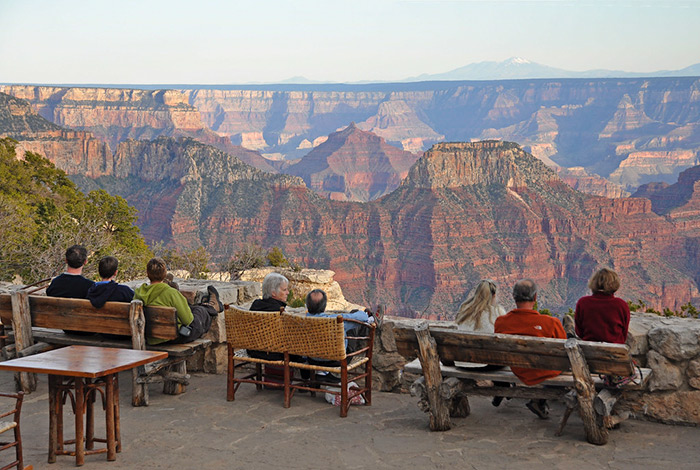

Thank you for a great write-up that highlights the attributes of Congaree vice focusing on the mosquitoes! The well prepared visitor will have an enjoyable time exploring this beautiful, unique park. Despite the skeeter meter reading five of six this weekend we enjoyed a long hike thanks to ample bug spray/long clothing. The Spiranthes orchids are in spike and there are still wildflowers. In winter the moss topped cypress knees resemble Christmas trees, in spring and summer the abundant green is breathtaking. Never a bad time to visit!
We visited while our daughter lived in Columbia. Being from Western WA state with Mt Rainier Nat’l Park in our backyard Congaree is unique & just beautiful in its own way. A staff member chatted with us about the Oregon Coast where she spent her off season. Of course we were very familiar with this Coast too. And Congaree entrance is free!!!
We stayed in longleaf for 3 nights in February. We’ll be back! A lovely atmosphere. Campsites were well maintained and equipped. With good gear for damp chilly weather it was a perfect peaceful getaway. Take a guided paddle to learn about the park. We will bring our own boats for the return trip. I probably won’t brave skeeter season, it appears it would be intense.